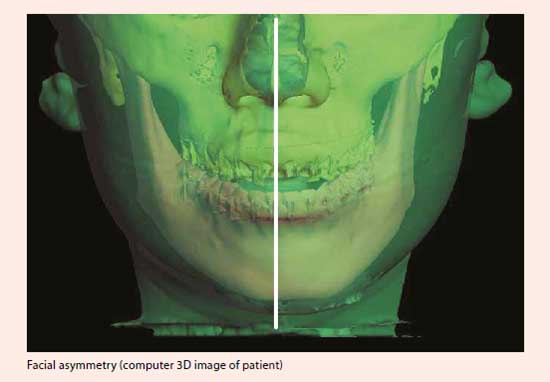What is - Jaw Malalignment
Jaw malalignment happens when the upper and lower jaws where the teeth are based are not aligned. It affects not just your facial appearance but also your bite, speech and chewing. Oral hygiene is harder to maintain with poor bite and crooked teeth.
Treatment for Jaw Malalignment
Early treatment of Jaw Malalignment
Jaw malalignment and damaging bites may be treated before puberty. The best age for treatment for jaw malalignment and damaging bites can range from 7 to 14 years old. Your child’s orthodontist is the best person to recommend the correct mode and timing of early treatment. Your child should see an orthodontist at age seven for an assessment.
Deficient Growth of Jaws
Deficient growth of the upper jaw can be treated using a facemask or reverse pull headgear. A narrow upper jaw can be treated with an expansion screw.
Deficient growth of the lower jaw can be treated by functional appliances.
The success of treatment depends on compliance with appliance wear and the natural growth potential of the child.
Excessive Growth of Jaws
Upper jaw growth can be restricted using a headgear. The success of treatment depends on compliance with appliance wear.
Restriction of lower jaw growth is often unpredictable and prone to relapse. Such treatment is rarely undertaken.
Treatment of Bite
When the jaws are misaligned, teeth may be forced to a bite in a manner which is damaging to the health of the teeth and gums. If left untreated, this can lead to loosening and early loss of teeth.
Teeth can be brought out of a damaging bite using fixed or removable appliances. The bite may need to be propped up with cement or plastic blocks in order to align the teeth. The success of treatment depends on compliance with appliance wear and maintaining good oral hygiene.

In adults, these disharmonies of jaw size or position can only be corrected surgically.
Surgical treatment of Jaw Malalignment
Some of the common problems are best dealt with a combined braces and surgical treatment approach known as Orthognathic Surgery. These are:
- Long or short jaws
- Excessive show of gums (i.e. gummy smiles)
- Overall elongation of face
- Facial asymmetry
- Facial deformities

Orthognathic surgery is a predictable treatment option for complex dental/ facial problems. It ensures the best possible results, both functionally and aesthetically. The lasting reward is a healthier and happier you.

Treatment is carried out in 4 phases:
- Phase 1: Treatment Planning Phase
Treatment planning is carried out jointly by an orthodontist and an oral and maxillofacial surgeon. The orthodontist determines how braces will align your teeth in preparation for surgery. The oral and maxillofacial surgeon studies your jaw deformity and decides on the type of surgery most appropriate for your case. This initial phase of treatment will include consultation, records-taking and discussion of the treatment plan with you. - Phase 2: Presurgical Orthodontic Phase
Many patients undergo an initial period of presurgical orthodontic treatment, where braces are fixed to align the teeth. This phase may take 9 to 18 months. The actual time taken depends on the condition, the patient’s age, cooperation and other factors. During this time, patients are seen at intervals of four- to six-weekly intervals.
At the end of this phase, the teeth are aligned so that they will fit into a good bite after surgery. - Phase 3: Surgical Phase
Surgery is scheduled when the presurgical orthodontic phase is completed. Inpatient surgery is needed to correct the malalignment in the jaw and face by making cuts in the bones and repositioning them in their desired alignment. Braces used to align teeth prior to surgery are left in place during the surgical procedure. They help to stabilise the teeth and jaw bones after surgery. - Phase 4: Postsurgical Orthodontic Phase
After surgery, postsurgical orthodontics is continued to achieve final alignment of the teeth and to retain them in their new position.
Contributed by
The information provided is not intended as medical advice. Terms of use. Information provided by SingHealth.
Get to know our doctors at SingHealth Hospitals in Singapore.
Get to know our doctors at SingHealth Hospitals in Singapore. here.

















